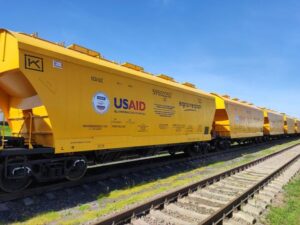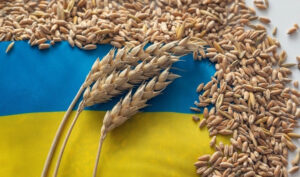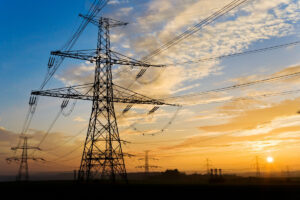
One of the largest grain market operators in Ukraine, Nibulon JV LLC, exported 100 thousand tons of grain to 25 countries using grain carriers and trucks provided by the USAID Ukraine project, the grain trader’s press service reported on its Facebook page.
The agricultural holding recalled that in 2023, Nibulon was forced to switch from water transportation of grain to transportation by road and rail. This alternative solution was helped by the USAID Ukraine economic support project. The Nibulona Project purchased 50 Modern Hope trucks with the capacity to transport 70 tons of grain each. Thanks to this support, Nibulona delivered and exported the first 100 thousand tons of grain to 25 countries.
“We are grateful to our international partners who lend a friendly hand in a difficult time for the company by providing the necessary railcars. This allowed us to continue working, resuming purchases of agricultural products at the blocked river terminals and thus supporting our agricultural partners. The combination of road and rail transport has allowed us to optimize logistics costs and offer purchase prices to farmers that ensure the profitability of their production,” said Nibulon Logistics Director Serhiy Kalkutin and congratulated his colleagues from Danube Transportation.
As reported, in 2023, USAID provided Nibulon with 50 hopper cars built at Karpaty DMZ for grain transportation. In 2024, USAID’s Economic Support for Ukraine provided the grain trader with 13 grain carriers with trailers. “Nibulon also asked the donor organization for assistance in obtaining 250 grain carriers.
Nibulon JV LLC was established in 1991. Prior to the Russian military invasion, the grain trader had 27 transshipment terminals and crop reception complexes, a one-time storage capacity of 2.25 million tons of agricultural products, a fleet of 83 vessels (including 23 tugs), and owned the Mykolaiv Shipyard.
“Before the war, Nibulon cultivated 82 thousand hectares of land in 12 regions of Ukraine and exported agricultural products to more than 70 countries. In 2021, the grain trader exported the highest ever volume of 5.64 million tons of agricultural products, reaching record volumes of supplies to foreign markets in August – 0.7 million tons, in the fourth quarter – 1.88 million tons, and in the second half of the year – 3.71 million tons.
Nibulon’s losses due to Russia’s full-scale military invasion in 2022 exceeded $416 million.
Currently, the grain trader is operating at 32% of capacity, has created a special unit to clear agricultural land of mines, and was forced to move its headquarters from Mykolaiv to Kyiv.

Ukraine’s agricultural sector made a significant breakthrough in development in 2010-2021, employing 17% of Ukrainians and generating 19% of GDP, while 70% of its products are exported, which is one of the highest rates in Europe, said Acting Minister of Agrarian Policy and Food Taras Vysotsky.
According to him, Ukraine’s production is enough to feed almost 400 million people.
“Ukraine’s role in international food security is very important. After the full-scale invasion of the aggressor country, Ukraine was unable to export its products for four months. This led to a 35% increase in the global food price index in 2022. In African countries, hundreds of millions of people were forced to significantly reduce their food consumption,” the press service of the Ministry of Agrarian Policy and Food quoted Vysotsky as saying in his speech at the national educational and professional course for young people ”State Builder: the Way to Restore the State.”
Vysotsky noted that Ukraine has traditionally exported grains and oilseeds and many other products. In particular, Ukraine ranks 4th in the world in corn exports, and first in sunflower oil. In addition, it ranks 7th in poultry exports. Ukrainian dairy farmers are among the top ten exporters of butter. In addition, Ukraine ranks 4th in walnut production and is one of the world’s leading exporters of honey.

Starting Monday, August 25, Ukraine may return to exporting electricity during daytime hours when the power system has a surplus, NPC Ukrenergo reported on Telegram.
According to the company, this is facilitated by a decrease in heat and, as a result, electricity consumption, as well as the early completion of the scheduled repair of one of the units of nuclear power plants. At the same time, solar power plants are actively operating during the daytime.
Ukrenergo reminded that in order to avoid accidents, the power system must operate in a balanced manner – the amount of energy produced every minute must correspond to the amount of consumed resource.
“Given the economic inexpediency of limiting the operation of solar power plants, starting from August 25, Ukraine plans to resume electricity exports to neighboring countries. Tomorrow, an auction will be held for access to interstate crossings in the directions of Romania, Hungary and Moldova,” the NPC said.
Electricity will be exported exclusively during the period of surplus – during the active operation of SPPs. During periods of maximum consumption, when there is not enough capacity in the power system, electricity will not be exported from Ukraine.
Source: https://interfax.com.ua/

During the first year of operation of the Ukrainian Sea Corridor, 64.4 million tons of cargo were transported, including 43.5 million tons of grain.
At the same time, 2,379 vessels used the “sea corridor” during this period, exporting products to 46 countries, the press service of the Ministry of Community Development, Territories and Infrastructure (Ministry of Reconstruction) reported on Friday.
“A strategic necessity for our country, which, despite all the risks, has shown its own alternative shipping route, is another step towards victory over Russia. Summarizing the results of the first year of operation of the temporary sea route, we thank those who made it possible – the Security and Defense Forces and civilian fleet workers,” the Ministry’s press service said on Facebook.
On August 16, 2023, the first vessel to use the sea route, commonly known as the “Ukrainian Corridor,” was the German container ship JOSEPH SHULTE, which had been blocked in the port of Odesa since the beginning of the full-scale invasion, the Ministry’s press service reminded.
According to the infographics of the Sea Ports Authority, in the second month of the corridor’s operation in September 2023, only 245 thousand tons of cargo were exported, including 34 thousand tons of grain, but in October the cargo turnover reached 1.4 million tons (582 thousand tons of grain cargo), in November – 2.9 million tons (1.14 million tons), in December – 4.9 million tons (1.89 million tons). In January 2024, cargo turnover reached 4.44 million tons (1.87 million tons of grain), in February – 5.2 million tons (2.65 million tons), in March – 5.14 million tons (2.57 million tons), in April – 5, 1 million tons (2.59 million tons), in May – 5.04 million tons (2.24 million tons), in June – 3.67 million tons (1.89 million tons), in July – 3.45 million tons (2 million tons), for two weeks of August – 1.73 million tons (938 thousand tons). t). t).
“The best greeting to the anniversary will be further development and support of the maritime infrastructure. This year, container traffic to the ports of Odesa and Chornomorsk has been restored. Further plans are to restore ferry service to seaports and involve seaports in the Mykolaiv region as soon as the security situation allows,” the Ministry of Reconstruction said in a statement.
Earlier, the spokesperson for the Ukrainian Navy, Captain Dmytro Pletenchuk, told Freedom TV channel that 2300 vessels used the grain sea corridor over the year and transported more than 60 million tons of cargo.
According to him, the “grain corridor” is actively used by European countries, with Spain and the countries of the global South leading the way.

Ukrainian honey producers have strengthened their positions in the global honey market over the past 10 years and increased export volumes in the period from 2012 to 2023 by more than five times, the press service of the Ukrainian Club of Agrarian Business (UCAB) said.
“In 2024, Ukrainian honey, despite the difficulties of a full-scale war, continues to demonstrate a steady positive dynamics in the world market. For the first three months of this year, honey exports amounted to more than 23 thousand tons, which in money equivalent is $44 million. The greatest demand is constantly observed in the countries of the European Union, in particular in Germany, Poland and France, which account for almost half of foreign currency earnings,” – said analysts.
According to their information, Ukraine has been in the top 5 world exporters of honey for several years. Thus, according to the results of 2023 Ukraine in honey exports takes the fourth place among the traditional world leaders with 55.4 thousand tons. In this rating it is ahead of China with 152.6 thousand tons, India – 98.7 thousand tons, Argentina – 68.9 thousand tons, and on the fifth position is Brazil with 28.5 thousand tons of honey.